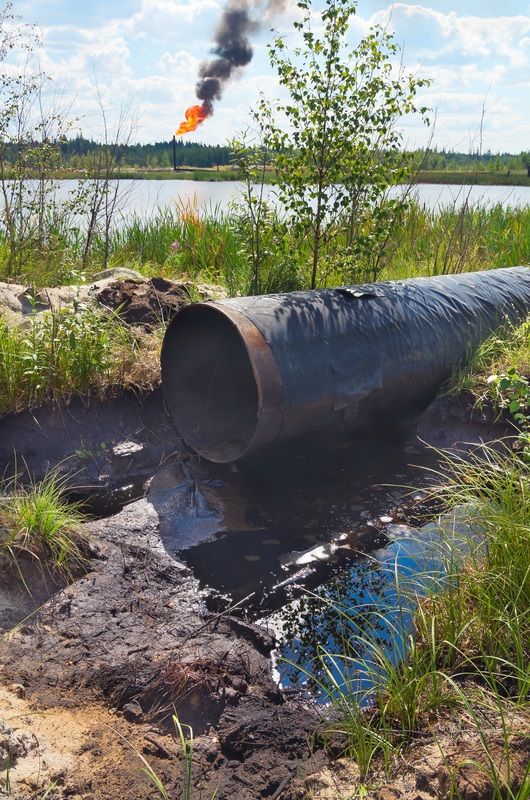The U.S. EPA and Army Corps issued the long awaited proposed waters of the United States (WOTUS) rule on February 14. 84 Fed. Reg. 4154 (Feb. 14, 2019) (“Proposed Rule”). Settling the WOTUS question is a major priority for this Administration. The Proposed Rule has sweeping implications and affects all promulgated Clean Water Act (CWA) regulatory provisions including EPA rules at 40 CFR Parts 110, 112, 116, 117, 122, 230, 232, 300, 302, and 401 and Corps rules at 33 CFR Part 328. These rules address everything from spills, releases and reporting to permitting and enforcement, and affect the jurisdictional status of every water feature in the United States.
What is a WOTUS?
The Proposed Rule keeps the major traditional water feature categories, but surprisingly adds “ditches” for the first time as a WOTUS where they might meet the traditional navigable waters test, or are constructed in a tributary or wetland (see discussion below).
The Pre-Publication 2018 WOTUS Rule identifies six water features within WOTUS jurisdiction:
- traditional navigable waters,
- tributaries that meet the traditional navigable waters test,
- ditches that meet the traditional navigable waters test or ditches constructed in a tributary or adjacent wetland (see discussion below),
- lakes and ponds that meet the traditional navigable waters test or contribute perennial or intermittent flow to a traditional navigable water
- impoundments of any water otherwise designated, and
- ‘adjacent wetlands’ to any of the above five categories.
See, e.g., Proposed Rule at 33 C.F.R. 328.3(a). Items (i) through (iv) are the waters referenced throughout the rule as “(a)(1) through (5)” waters.
What is Different?
Compared to the ill-fated 2015 WOTUS Rule (80 Fed. Reg. 37,054 (June 20, 2015)), the Proposed Rule shifts the legal analysis from the complex ‘significant nexus’ test espoused by former Supreme Court Justice Kennedy in the 2006 Rapanos 4-1-4 plurality decision (547 U.S. 715 (2006)), to a brighter line test of adjacency or direct connection penned by former Justice Scalia and joined by justices Thomas, Alito and Chief Justice Roberts. The Scalia decision is best characterized as having greater fidelity to Constitutional limits on Federal authority (e.g. Commerce Clause), where the Kennedy decision gave greater deference and flexibility to federal agencies to determine what waters satisfied Constitutional limits.
Replacing the “significant nexus” test is, at least, with respect to wetlands, the “direct hydrologic surface connection” criteria, which was considered a valid test for WOTUS prior to the Rapanos decision in 2006.
Wetlands
Many are not aware that the definition of wetlands has remained the same since the 1980s. The proposed rule similarly does not change the definition of what is, or is not, a wetland, but applies the more rigorous Scalia opinion in Rapanos tying the definition more strongly to interstate commerce and the Federal Constitution. Keeping wetland definition constant avoids re-litigating the CWA battles in the late 1980s and early 1990s where Corp guidance and manuals were repeatedly invalidated with courts and parties settling on the 1987 manual, which now has 30 years of supplementary guidance, and fairly settled quasi-judicial and judicial interpretation for a complex scientific question.
However, the ‘direct hydrologic surface connection’ language for ‘adjacent wetlands’ means wetlands must abut or have a direct hydrologic surface connection to traditional navigable waters, tributaries or ditches that meet the traditional navigable waters test, or ditches constructed in a tributary or wetland, lakes and ponds that meet the traditional navigable waters test or contribute perennial or intermittent flow to a traditional navigable water.
The structure of the rule supports the interpretation that adjacency will supplant the significant nexus determination, which has created regulatory uncertainty and been expensive to implement, in the Post-2015 Rule.
The Pre-Publication 2018 WOTUS Rule defines ‘abut’ as touching ‘at least at one point or side of a water identified in paragraphs (a)(1) through (5) of this section.’ The rule also explains that a direct hydrologic surface connection occurs as a result of inundation from a paragraph (a)(1) through (5) water to a wetland or via perennial or intermittent flow. Importantly, this bright line definition provides greater certainty to biologists conducting delineations and provide a clearer regulatory basis for determining jurisdiction than the Post-2015 rules.
Ditches
The Proposed Rule, for the first time, expressly includes “ditches” as one of the six major categories of WOTUS. but only where:
(1) the ditch meets the longstanding ‘traditional navigability’ test;[1]
(2) the ditch was constructed in a tributary or relocates or alters a tributary and meet the tributary definition (discussed below); or
(3) the ditch is constructed in an adjacent wetland so long as it also satisfies the definition of tributary.
Identifying ditches in the primary category of WOTUS is a first. Even the 2015 rule did not include ditches in the primary definition of WOTUS, but brought ditches in as a ‘water’ and a ‘tributary’ in the definitional and exclusion provisions. One might argue that this is a simple terminology change and that many “ditches” with flow attributes and functions of tributaries were already subject to jurisdiction. However, there are millions of miles of man-made ditches in the United States, many of which were constructed in adjacent wetlands prior to the CWA, a statute which decidedly does not operate retroactively. The Proposed Rule, if enacted as written, could result in extensive retroactivity litigation for these older stormwater management and drainage ditches, despite clear Corps and EPA rule-makings and guidance to the contrary.
The Proposed Rule also for the first time seeks to clarify when a WOTUS and point source under the CWA now can be one and the same. (“However, an ephemeral feature may constitute a point source that discharges pollutants to a ‘‘water of the United States.’’) (Proposed Rule at 4176) It is notable that the definition of a “point source” under the CWA explicitly includes ditches, but forty years of Corps and EPA precedent excluded point sources from WOTUS. Limiting ditches to only those meeting traditional navigability or constructed in, altering, or relocating a tributary helps but does not resolve the legal inconsistency of calling ditches both a point source and a WOTUS. This could be particularly problematic for effluent created or dominated flow regimes, including stormwater discharges, in an otherwise ephemeral stream or drainage ditch. Many ditches not historically subject to the CWA permitting or regulatory regime may now be subject to federal jurisdiction.
A major issue in implementing the ditch exceptions is “forensic engineering” or the level of proof required to determine if a ditch relocated a tributary, or a tributary relocated to a ditch and determining wetland status decades and even centuries ago for the numerous old ditches in the United States.
Tributary
The tributary definition is very important and carefully drafted. Tributary is:
- Naturally occurring – the Post-2015 rule included artificially created features
- Can be intermittent or perennial – the Post-2015 rule included ephemeral waters
- Must contribute flow to a traditional navigable water in a ‘typical year’; that flow can be through a non-WOTUS feature (e.g. conveyance, ditch, pipe, etc.)
Other Key Issues
The Proposed Rule contains 67 pages of explanatory preamble and rule and a litany of issues for policy makers, scientists, water supply managers, federal state and local agencies to consider. Among the issues are the revision of exclusions for waste management systems, inclusion of detention, retention and infiltration, and groundwater recharge.
EPA and the Corps may have unwittingly brought stormwater management systems, which frequently meet the definition of wetland, back into regulation as a WOTUS despite fairly recent hard-fought legal cases excluding these features. The proposal excludes “Stormwater control features excavated or constructed in upland to convey, treat, infiltrate or store stormwater run-off.” Many stormwater control features were constructed in wetlands prior to enactment of the CWA, and many stormwater control features have become wetlands under the Corps 1987 Manual and guidance since their construction. These features would invariably become WOTUS under the proposed rule.
Additionally, the definition of waste management systems has been narrowed from recent court decisions which would include stormwater management. EPA and the Corps have narrowed the waste management system exclusion which has been in CWA rules since the 1970s to only those detention, retention, and infiltration systems that are part of a “wastewater recycling structure constructed in upland.” Wastewater is decidedly not stormwater under EPA regulations, guidance, and court decisions. Unless the proposal is changed, or subsequent court decisions reinstate stormwater management system exceptions, the Proposed Rule would potentially bring a large number of detention, retention, and infiltration systems constructed for stormwater management into regulation as WOTUS.
Conclusion
The Proposed Rule establishes brighter legal and scientific lines for WOTUS determinations than the 2015 rule. This is important and a welcome fix. In some respects, the Proposed Rule returns jurisdiction to the settled rule of law utilized for thirty years of CWA permitting and enforcement. However, with the addition of ditches and limitation on stormwater management, many features will now become jurisdictional.
Given that the WOTUS definition triggers penalties of up to $ 52,500 per day and per violation, further consideration and refinement seems appropriate. WOTUS does not merely address how we manage environmental issues in the United States, but affects a litany of release reporting, response and cleanup, and permitting requirements with serious consequences, including incarceration. WOTUS can be used and is used to stop projects unwanted for public policy, political, or parochial reasons under the citizen suit provisions in CWA.
***
Dave Moore is a Partner at Earth & Water Law, LLC, was a former EPA attorney and worked in EPA offices in Atlanta, Washington D.C and New York, and is an adjunct professor at Emory School of Law where he has taught Clean Water Act and directed environmental litigation clinical work. Dave has a B.S. in Biology from the University of South Florida where he focused on aquatic and marine systems and organic chemistry, and graduated from the nationally acclaimed Environmental Law Program at Pace University School of Law in New York.
[1] Ditches that are used, were used, or susceptible to use in interstate or foreign commerce; part of a territorial sea; or subject to ebb and flow of tide would remain WOTUS. The ‘traditional navigability’ test has applied to CWA WOTUS since the statutes’ enactment in 1972 and emanates from the precedential Supreme Court decision in The Daniel Ball, 77 U.S. (Wall) 557 (1870).




